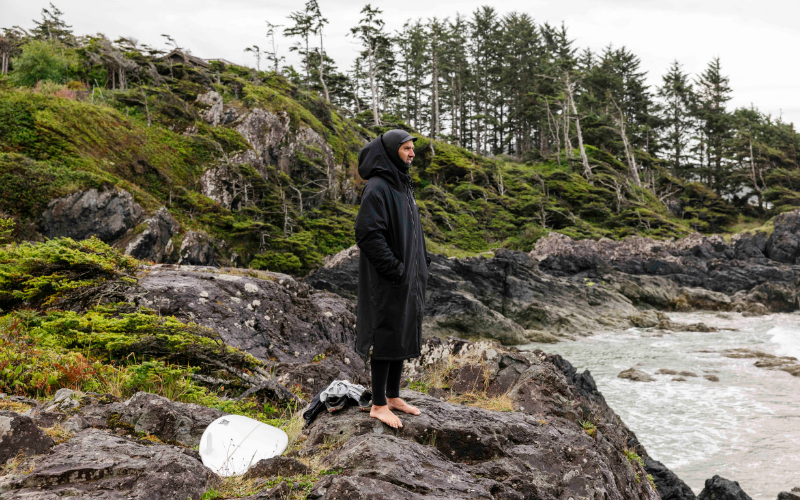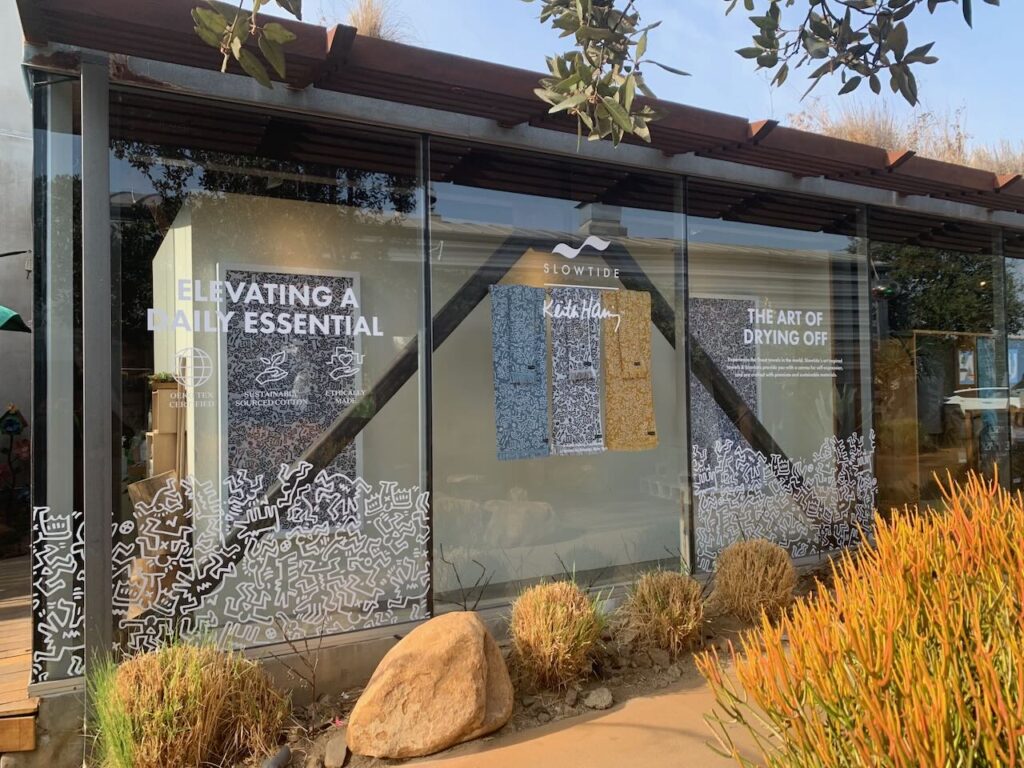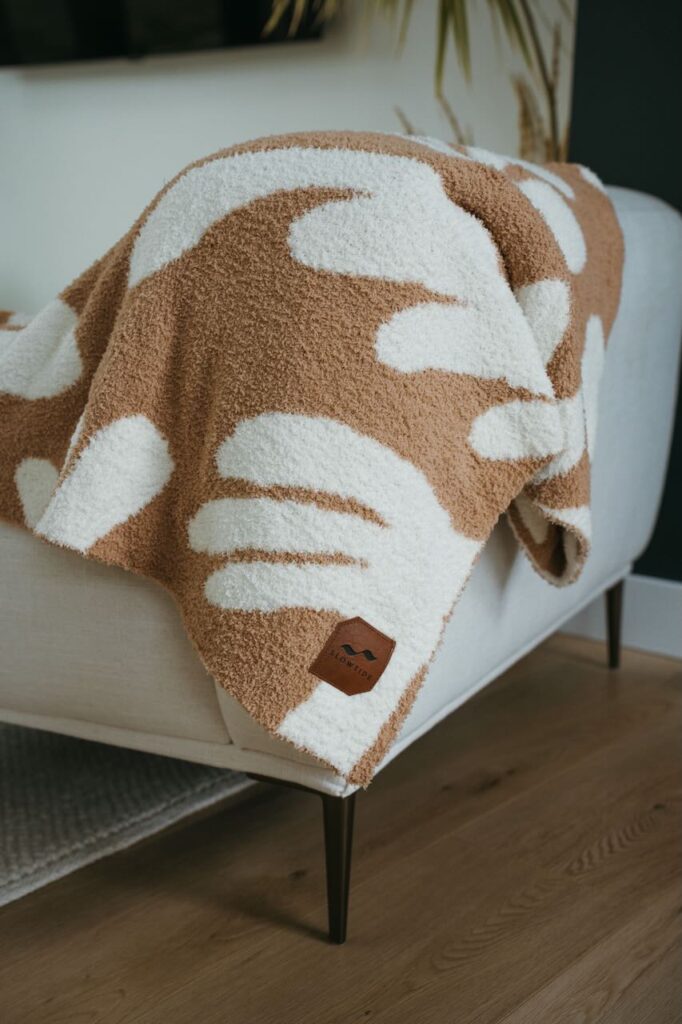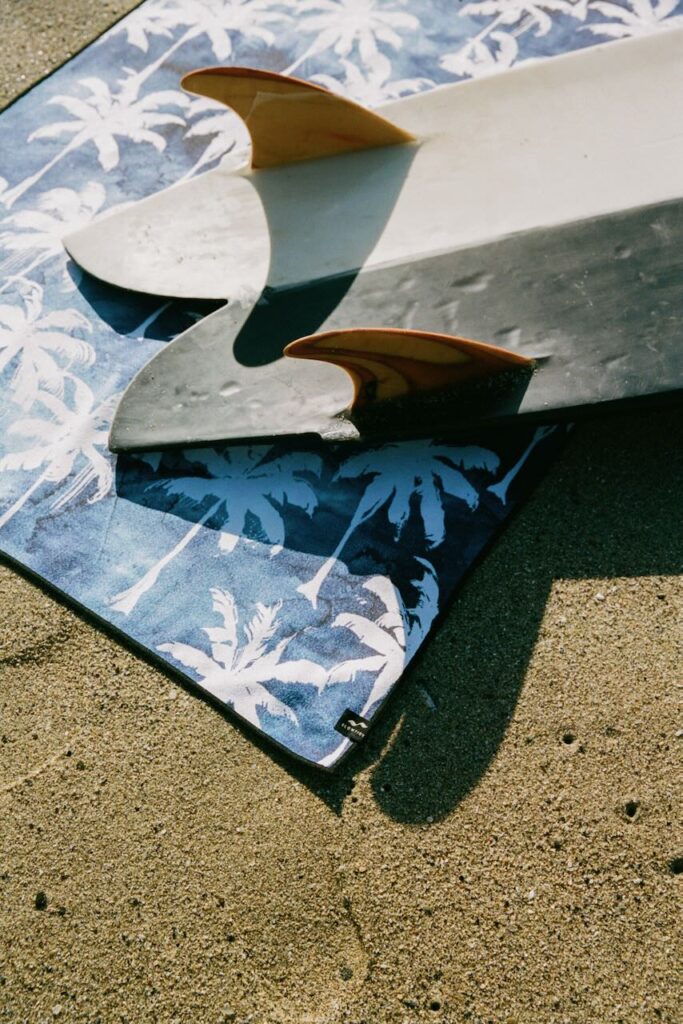Founded in 2015 by three friends — Dario Phillips, Kyle Spencer, and Wylie Von Tempsky — Slowtide began as a passion project to create a better beach towel. Over the past decade, Slowtide, based in Costa Mesa, Calif., has grown from a small collection of printed cotton towels into a lifestyle brand, offering a wide range of products, from ponchos to parkas, while staying true to their coastal roots and commitment to sustainability.
As they celebrate their 10th anniversary, the founders shared with SESO some of the lessons they have learned along the way, and where Slowtide is headed next.
What has been the most significant challenge you three have faced in building Slowtide over the past decade, and how did you overcome it?
Slowtide Partner Dario Phillips: Over the past decade, one of our biggest challenges has been managing inventory planning through rapid growth, particularly balancing the evolving mix between direct-to-consumer and wholesale demand. As our ecommerce business accelerated and our retail partnerships expanded globally, forecasting became increasingly complex.
We overcame this by investing in stronger inventory planning systems, expanding our manufacturing network, and strengthening communication with our sales reps and retail partners to better anticipate sell-through and seasonal needs. These learnings have helped us become a more efficient and resilient brand, capable of scaling strategically while supporting both sides of the business.
A great example of this progress is the launch of our All-Weather Parka in early October across North America. It has been our most successful product launch to date — we sold out of our first production run in Canada within two weeks and expect to sell out in the U.S. this month. We’re already planning expanded sizing and new colorways based on retailer and consumer demand, which reinforces how far we’ve come in aligning product innovation with smart inventory planning.

The new Slowtide parka. Photo courtesy of Slowtide.
Looking back, what do you consider Slowtide’s biggest success or milestone, and why does it stand out?
Slowtide Partner Wylie Von Tempsky: Our biggest success is honestly our longevity and consistency. Ten years is a long time in this space. And to still be doing it with the same three founders is something we don’t take for granted.
We’ve navigated a global pandemic, supply chain chaos, and an ever-changing retail landscape, and to still be growing and energized feels like a real accomplishment. A lot of great brands have sadly come and gone, so maintaining momentum through all of that means a lot to us.
I’m also really proud of how we’ve been able to give back to the communities that shaped us — from wildfire relief in LA and Maui to surf therapy with Un Mar De Colores to ocean conservation with Sustainable Coastlines Hawai’i. Slowtide has always been rooted in surf, art, and community, so contributing to those places is something I’m really proud of.
And honestly, one of the best feelings will always be seeing our products out in the world. Spotting someone at the beach or on a trip with a towel or poncho that started as a sketch on my screen… it never gets old. To think it went from an idea to design to production to someone choosing to spend their hard-earned money on it because it adds something to their day… that never gets old.

Slowtide surfer Coco Ho with a Slowtide beach towel. Photo courtesy of Slowtide.
What are the most valuable lessons you’ve learned about running a business in the lifestyle and home goods industry?
Slowtide Partner Kyle Spencer: There have been endless lessons! Maybe the one that comes to mind in relation to the lifestyle and home goods space is this: great product always wins. Trends come and go, marketing strategies shift, distribution evolves… but if the product is dialed — it always has a way of rising to the top.
Another huge lesson for us has been the power of staying authentic. Slowtide has always done best when we make things we personally love and believe in. Whenever we drifted into a partnership, a new distribution channel, or a product that didn’t feel 100 percent “us,” it usually showed. The traction just wasn’t the same. Looking back, those moments were great reminders to trust our instincts and keep the brand grounded in what we genuinely care about.
On the flip side, the things that have consistently worked for us are the ones built from a genuine passion and interest — collaborations with the bands and artists we grew up on, like the Grateful Dead and Wu-Tang Clan; filling product gaps in our own lives, like our changing ponchos; and taking care of the core retail partners who believed in us from day one. Those are the decisions that have paid off year after year and helped shape Slowtide into what it is today.

Slowtide’s bath towels showcasing Keith Haring’s art in the window at Seed People’s Market in Costa Mesa, Calif. Photo courtesy of Slowtide.
Is Slowtide still fully independent, or have you brought on financial partners to support growth? How has this impacted the business?
Slowtide Partner Dario Phillips: Slowtide remains an independently owned and operated brand, with the founding team still holding a majority ownership stake. Over the years, we’ve raised two small rounds of capital (first in 2017 and again in 2022) from a select group of strategic partners who align with our long-term vision.
These investors aren’t traditional private equity backers; they serve more as strategic advisors and connectors. They provide a valuable sounding board for major business decisions and receive quarterly updates to stay close to the brand’s progress. What’s been especially impactful is their ability to open doors, offering warm introductions to partners and opportunities that would be difficult to access otherwise.
For example, one of our strategic partners, Aaron Levant, helped facilitate our involvement with ComplexCon, where we produced custom Takashi Murakami towels that sold out in minutes. Collaborations like that have helped broaden our reach, elevate brand awareness, and showcase the creative side of Slowtide on a global stage — all while maintaining the independence and authenticity that define who we are.
Ultimately, these partnerships have allowed us to scale thoughtfully, combining the agility of an independent brand with the network and insight of experienced industry leaders.
How is the business different now compared to when you first started in 2015? What’s been the biggest shift in your strategy?
Slowtide Partner Kyle Spencer: In some ways, the business isn’t that different from when we started — and in other ways, it’s a completely different world. Back in 2015, the decisions were simpler and the stakes were lower. Now every decision carries more weight.
Our first collection was eight SKUs of printed cotton towels. Today, our multi-seasonal lines have 200-plus SKUs, supported by a global supply chain, hundreds of retail doors, international distributors in Europe, Australia, and Japan, multiple 3PLs across different regions, and a full tech stack of software systems. The scale is completely different.
When we first started, we were laser-focused on the beach towels category. But as we’ve built the brand, it’s given us the trust and credibility with retailers and customers to expand into new product categories.
No matter how much we’ve grown, our mission hasn’t changed. We’re still here to create products with purpose, tell authentic stories, connect and support the communities and causes we genuinely care about. The business is bigger now, but the heart of the brand is the same.

The early days: The first production order of 1,000 units managed out of co-founder Dario Phillips’ garage in Venice Beach, Calif. Photo courtesy of Slowtide.
With your international growth and expansion into housewares, what have been the key factors in successfully scaling into new regions and verticals?
Slowtide Wylie Von Tempsky: For us, the biggest factor has always been creating products that actually fill a void in the market — things customers fall in love with once they see them, touch them, or use them. Sometimes that’s an uphill battle, especially when you’re introducing a product people aren’t used to seeing in a certain type of store or at a higher price point than they’re accustomed to. But when the design, quality, and functionality are all there, customers come back.
Being independently owned has also helped. We don’t have outside pressure to chase unrealistic growth, so we can enter new regions and categories because we want to, not because we have to.
As we’ve expanded into new regions, partnering with best-in-class distributors, reps, and retailers has been huge. We’re thoughtful about who we work with, and collaborations that resonate locally have helped us enter new markets in a natural, meaningful way.

A Slowtide blanket. Photo by SESO.
How does your business breakdown between wholesale and DTC percentage-wise? What have been the challenges and positives in each channel?
Slowtide Partner Dario Phillips: Our business is currently split fairly evenly between wholesale and direct-to-consumer, with a third key channel, Custom Partnerships, which has been seeing major growth.
While our DTC business has accelerated significantly over the past year, we’re very optimistic about our retail partnerships heading into 2026. The main challenge on the wholesale side hasn’t been sell-through — most stores are selling through Slowtide products quickly — it’s more so been the open-to-buy limitations. Retailers don’t always have the budget flexibility or open dollars right when they need the inventory. So, we’ve been trying to work closely with them to forecast demand, tighten up replenishment, and create incentive programs to support their sell-through and cash flow.
Our DTC growth has also had a positive ripple effect on wholesale. As our marketing and storytelling have become more effective, brand awareness has increased, leading more customers to discover Slowtide online and then visit their local surf, outdoor, or lifestyle retailer to see and feel the product. Our customer service and social teams often direct those shoppers to their nearest stockist, creating a win-win between e-commerce and brick-and-mortar.
Our Custom Partnerships program has also turned into a major growth driver for us. We’ve been able to team up with brands, hotels, and events like Kith, Florence, Olukai, Surf Ranch, Ohana Festival, and Ace Hotel to create exclusive co-branded towels, ponchos, and more. These projects allow us to tap into new communities and show up in places other brands normally wouldn’t. And a lot of the time, they open the door to new retail relationships and long-term collaborations, which has been huge for the brand.
Together, these three channels give us a really balanced, resilient business and let Slowtide connect with customers in a bunch of meaningful ways.
How has your team evolved over the years, and what have you learned about building and managing a team as the company has grown?

A Slowtide beach towel. Photo courtesy of Slowtide.
Slowtide Partner Kyle Spencer: We’ve always been scrappy and had a lean startup mentality from day one. Any small investment we raised over the years mostly went straight into production orders since we don’t use a factor because we wanted to be able to handle our receivables in-house. So, our team has grown super organically — basically as revenue and profitability allowed, year by year.
In the early days, it was just the three of us, not taking a salary and living off savings. Every dollar we made went right back into the business. I still remember hiring our first employee in 2018 and thinking, “Why are we hiring someone when we’re not even paying ourselves yet?” But the workload had become way too much, and we trusted the vision enough to bet on the future.
Today we’re a team of 15, and we still keep that same lean mindset. It’s helped us get through the highs and lows — from the chaos of the pandemic to the slowdown afterward.
We all came from different companies before Slowtide, and we try to take the good from those experiences and leave the bad. We’re intentional about building a culture around the values we actually care about. We do our best to take care of our team, knowing they’ll take care of the brand and our customers.
At the end of the day, we spend more time with our team than almost anyone else, so it’s important to surround ourselves with people who are positive, fun, and genuinely passionate about what Slowtide represents. We want a team that inspires us, supports each other, and genuinely loves the lifestyle we’re building this brand around.
What’s your vision for Slowtide’s next decade? Are there new product categories, markets, or innovations you’re excited to explore?
Slowtide Dario Phillips: Our vision for the next decade is to continue expanding the Slowtide world — this lifestyle that’s rooted in art, performance, and sustainability — while staying true to our coastal DNA. There’s still so much room to grow within our core categories: beach towels, ponchos, parkas, bath towels, blankets… all the things people use every day at home, outdoors, and on the move.
We also see a ton of opportunity in introducing complementary products that naturally extend how people live with Slowtide. The All-Weather Parka is a great example of that evolution — a functional, elevated product that fills a void and fits perfectly into the way our community already lives. We want to keep building on that momentum and expand into new categories that feel intentional and aligned with who we are.
On the brand side, we’re really focused on expanding into new markets, strengthening premium retail partnerships, and doubling down on authentic storytelling. Our goal for the next decade is simple: become the go-to lifestyle textile brand for retailers and customers who value quality, creativity, and community. Slowtide has always been about bringing thoughtful design to functional products people use every day, and we’re excited to keep growing that world in a meaningful way. And to keep having fun!






